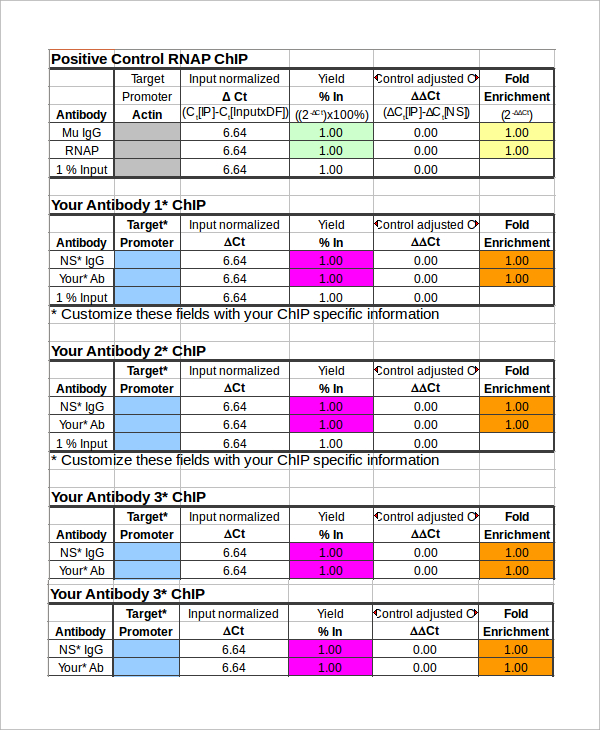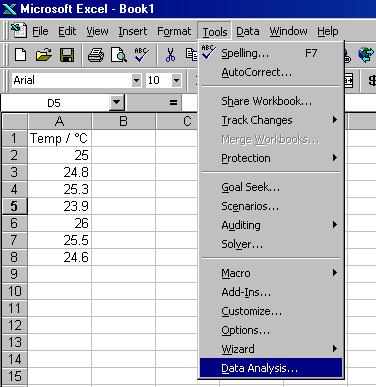

- #FORMAT DATA FOR STATISTICAL ANALYSIS IN EXCEL HOW TO#
- #FORMAT DATA FOR STATISTICAL ANALYSIS IN EXCEL INSTALL#
- #FORMAT DATA FOR STATISTICAL ANALYSIS IN EXCEL GENERATOR#
- #FORMAT DATA FOR STATISTICAL ANALYSIS IN EXCEL SERIES#
Moving Average is used extensively in stock price as a technical indicator.
#FORMAT DATA FOR STATISTICAL ANALYSIS IN EXCEL SERIES#
Moving Average, another great tool for those using Excel for statistical analysis, is ideal for time series data such as stock price, weather report, attendance in class, etc. Using Excel for Statistical Analysis: Moving Average If the P-value in the ANOVA summary table is greater than 0.05, you can say that there is a significant difference between the groups. If you have three groups of datasets and want to check whether there is any significant difference between these groups or not, you can use ANOVA single factor. You will find three types of ANOVA in Excel: In other words, ANOVA analyses two or more groups simultaneously and finds out whether any relationship is there among the groups of data set or not.įor example, you may use ANOVA if you want to analyze the traffic of three different cities and find out which one is more efficient in handling the traffic (or if there are no significant differences among the traffic). ANOVA checks the impact of one or more factors by comparing the means of different samples.ĪNOVA method in Excel shows whether the mean of two or more data set is significantly different from each other or not. Using Excel for Statistical Analysis: ANOVA (Analysis of Variance)Īnalysis of variance (ANOVA) is a statistical technique that is used to check if the means of two or more groups are significantly different from each other. It is the most basic set of analysis that can be performed on any data set. You can find descriptive analysis by going to Excel→ Data→ Data Analysis → Descriptive statistics. Instead of showing it on an excel, you may summarize it, it becomes useful: an average wage, or a median income, is much easier to understand and then analyze the data. For example, you may want to represent the incomes of a community.

Descriptive Statistics gives you a general idea of trends in your data including:ĭescriptive Statistics is useful because it allows you to take a large amount of data and summarize it. Using Excel for Statistical Analysis: Descriptive Statisticsĭescriptive Statistics tool in the Data Analysis add-in can be used on an existing data set to get up to 16 different descriptive statistics, without having to enter a single function on the worksheet. You can create PivotTables from lists, as you define which fields should be arranged in columns, which fields should become rows, and what data you wish to summarize. You can use it to create an informative summary of a large dataset or make regional comparisons between brand sales. Excel can help you by recommending, and then, automatically creating PivotTables, which are a great way to summarize, analyze, explore, and present your data.Ī pivot table may be used as an interactive data summarization tool to automatically condense large datasets into a separate, concise table. It helps you analyze all the data in your worksheet so as to make better business decisions. Using Excel for Statistical Analysis: Pivot TablesĪ PivotTable is an Excel tool for summarizing a list into a simple format. In this blog, I have tried to explore the functionalities of MS-Excel as a potential tool for statistical analysis and suggested some simple tricks and techniques that will save both time and energy.īy clicking the above button, you agree to our terms and conditions and our privacy policy.
#FORMAT DATA FOR STATISTICAL ANALYSIS IN EXCEL HOW TO#
In this discussion, we explain in detail the essential statistics for data analysis using Excel and how to perform descriptive analysis using Excel.
#FORMAT DATA FOR STATISTICAL ANALYSIS IN EXCEL INSTALL#
Remember to install Data Analysis ToolPak if you are using Excel for statistical data analysis.

Having knowledge of the essential statistics for data analysis using Excel answers is a plus. Most data analysts using Excel for statistical analysis depend largely on these two Excel features. Whether you are performing statistical analysis using Excel 2010 or Excel 2013, you need to have a clear understanding of charts and pivot tables. However, using Excel for statistical analysis requires clarity of thought, data analysis knowledge, and strong decision-making skills. The convenience of use and cost are two very important reasons why most data professionals prefer using Excel for statistical data analysis. MS Excel is one of the most commonly used tools for data analysis.
#FORMAT DATA FOR STATISTICAL ANALYSIS IN EXCEL GENERATOR#


 0 kommentar(er)
0 kommentar(er)
